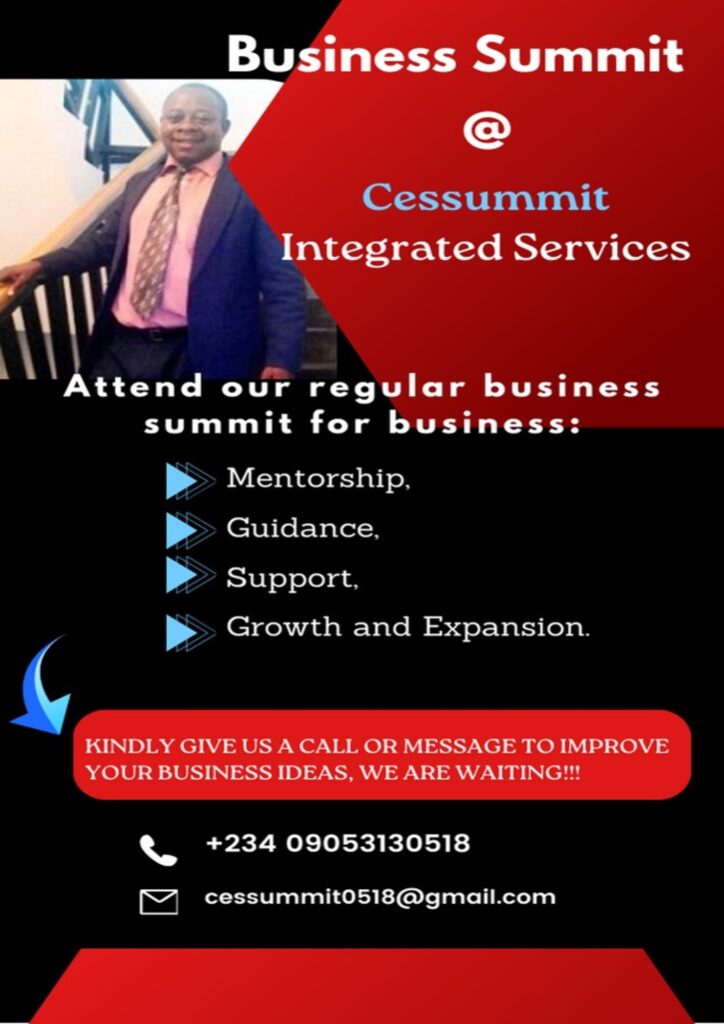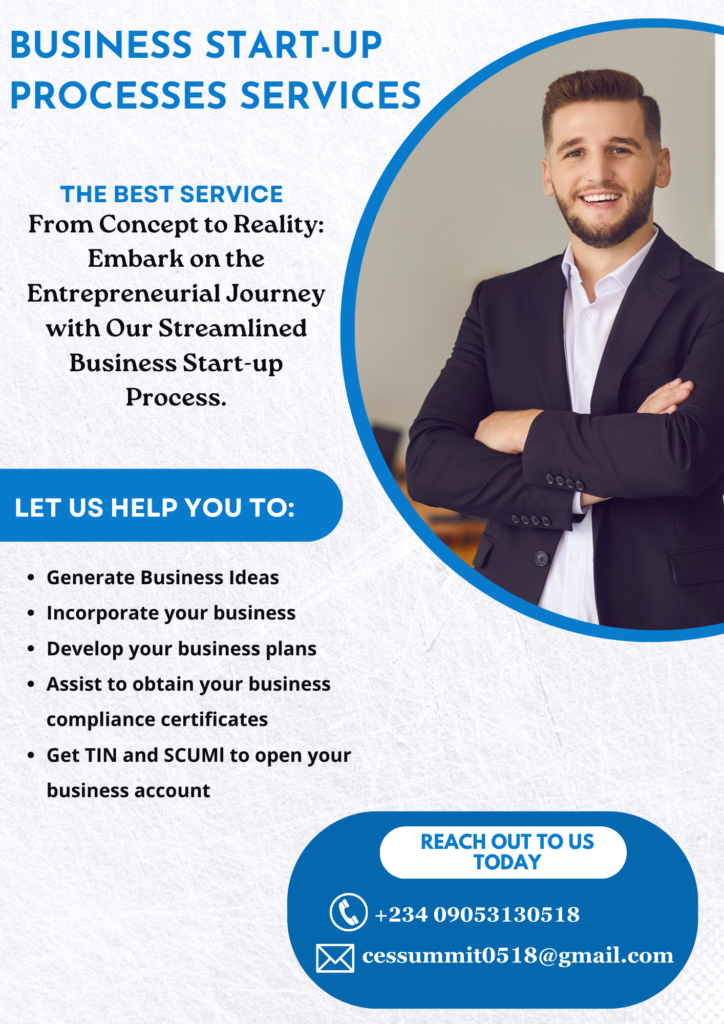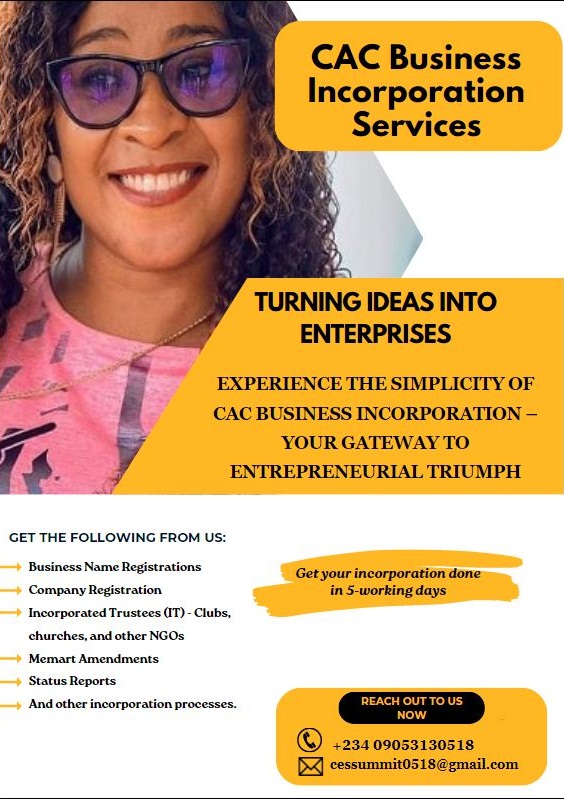
This is how to Set 2025 corporate financial goals
This is how to Set 2025 corporate financial goals – Do you need to learn how to set yearly financial goals. Then, this post will teach you all about it.
Setting corporate financial goals for any year is a critical undertaking that requires careful consideration and strategic planning. As organizations navigate the dynamic and ever-changing business landscape, establishing clear and achievable financial objectives is essential for sustainable growth and success. In an era marked by technological advancements, economic fluctuations, and evolving consumer preferences, crafting robust financial goals is not only a means to enhance profitability but also a proactive approach to staying resilient and competitive. This guide outlines the key steps and considerations to effectively set corporate financial goals for 2024 and other years, enabling businesses to align their resources, optimize performance, and thrive in the face of challenges.

Contents
- 1 This is how to Set 2025 corporate financial goals
- 2 Assessing Current Financial Position:
- 3 Identifying Specific Financial Goals:
- 4 Strategic Investments and Capital Allocation:
- 4.1 Capital Expenditure Plans:
- 4.2 Debt Management:
- 4.3 Evaluation Criteria for Strategic Investments: This is how to Set 2025 corporate financial goals
- 4.4 Risk Management:
- 4.5 Mitigation Strategies:
- 4.6 Employee Incentives and Engagement:
- 4.7 Training and Skill Development:
- 4.8 This is how to Set 2025 corporate financial goals
- 4.9 Employee Engagement Strategies:
- 4.10 Monitoring and Reporting:
- 4.11 Quarterly and Annual Reviews:
- 4.12 Communication and Transparency: This is how to Set 2025 corporate financial goals
- 4.13 Continuous Improvement:
- 4.14 Flexibility in Goal Adjustment:
- 4.15 Cultivating a Culture of Continuous Improvement:
- 4.16 This is what Cessummit Integrated Services can do for you:
- 4.17 1. Business Registration & Incorporation
- 4.18 2. Business Planning & Proposal Writing
- 4.19 3. Compliance & Regulatory Support
- 4.20 4. Financial Advisory & Funding Support
- 4.21 5. Business Development & Consulting
- 4.22 Read more from us: This is how to Set 2025 corporate financial goals
- 4.23 Concluding on This is how to Set 2025 corporate financial goals
- 4.24 Share this:
- 4.25 Like this:
This is how to Set 2025 corporate financial goals
To start with, setting corporate financial goals is a crucial aspect of strategic management for any business. Financial goals serve as a roadmap guiding the organization towards success and sustainability. They provide a clear direction for decision-making, resource allocation, and overall financial management. This introduction explores the importance of setting corporate financial goals, the alignment of these goals with business strategy, and the consideration of external factors.
Importance of Setting Corporate Financial Goals:
- Guidance for Decision-Making: Financial goals provide a framework for making informed and effective decisions. Whether it’s investment decisions, budgeting, or risk management, having well-defined financial goals helps prioritize actions that contribute to the overall success of the organization.
- Resource Allocation: Clear financial goals assist in allocating resources efficiently. By identifying key areas that require financial investment, businesses can optimize their spending and focus on initiatives that directly contribute to achieving the set objectives.
- Performance Evaluation: Financial goals serve as benchmarks for evaluating the performance of the organization. Regularly assessing financial metrics against established goals enables businesses to identify areas of improvement, success, and potential challenges.
Aligning Goals with Business Strategy:
- Integration with Overall Strategy: Corporate financial goals should be closely aligned with the broader business strategy. This alignment ensures that financial objectives support the company’s mission, vision, and long-term strategic initiatives.
- Balancing Short-Term and Long-Term Objectives: The financial goals must strike a balance between short-term gains and long-term sustainability. Aligning financial objectives with the business strategy helps avoid conflicts and ensures a holistic approach to organizational success.
- Adaptability to Market Dynamics: Businesses operate in dynamic environments, and their financial goals should be adaptable to changing market conditions. Aligning financial goals with the business strategy enables the organization to respond effectively to market shifts and emerging opportunities or threats.
Consideration of External Factors:
- Economic Conditions: External economic factors such as inflation rates, interest rates, and overall economic health can significantly impact financial goals. Businesses need to consider these factors when setting realistic and achievable financial objectives.
- Regulatory Environment: Compliance with regulations is critical for financial success. External factors such as changes in tax laws, industry regulations, and international trade policies can influence financial goals and strategies.
- Competitive Landscape: The business environment is shaped by competition. Considering external factors like market competition, industry trends, and consumer behavior ensures that financial goals are realistic and relevant within the broader market context.
In essence, setting corporate financial goals, aligning them with business strategy, and considering external factors are interconnected processes that contribute to the overall success and sustainability of an organization. A thoughtful approach to goal-setting, strategic alignment, and environmental awareness positions businesses for financial resilience and growth. This is how to Set 2025 corporate financial goals
Assessing Current Financial Position:
It is crucial to assess the business’s current financial performance to understand what actions are needed for improvement. This is how to Set 2025 corporate financial goals, Therefor you must endeavor to do the following:
Financial Statements Analysis:
Analyzing financial statements is also very crucial and This is how to Set 2025 corporate financial goals
Income Statement:
- The income statement provides a snapshot of a company’s profitability over a specific period. Analyzing revenue, expenses, and net income helps assess the core operational performance.
- Key components include:
- Revenue: Examining sources of revenue and identifying trends.
- Expenses: Categorizing and scrutinizing operating and non-operating expenses.
- Net Income: Evaluating overall profitability after deducting expenses from revenue.
Balance Sheet:
- The balance sheet offers insights into a company’s financial position at a specific point in time. It comprises assets, liabilities, and equity.
- Key elements include:
- Assets: Assessing liquidity, solvency, and the composition of assets.
- Liabilities: Examining obligations and understanding the company’s debt structure.
- Equity: Understanding the ownership structure and shareholders’ equity.
Cash Flow Statement:
- The cash flow statement tracks the inflow and outflow of cash, providing visibility into the company’s liquidity and operational efficiency.
- Key sections include:
- Operating Activities: Analyzing cash generated from core business operations.
- Investing Activities: Evaluating cash flows related to investments in assets.
- Financing Activities: Assessing cash flows from financing, including debt and equity transactions.
Key Performance Indicators (KPIs): This is how to Set 2025 corporate financial goals
Revenue Growth:
- Revenue growth indicates the company’s ability to increase sales over time. Analyzing trends in revenue growth helps evaluate market demand and the effectiveness of sales and marketing strategies.
- Calculation: [(Current Revenue – Previous Revenue) / Previous Revenue] * 100.
Profit Margins:
- Profit margins measure the profitability of the company and efficiency in cost management. Key margins include gross margin, operating margin, and net profit margin.
- Calculation:
- Gross Margin = (Gross Profit / Revenue) * 100.
- Operating Margin = (Operating Income / Revenue) * 100.
- Net Profit Margin = (Net Income / Revenue) * 100.
Return on Investment (ROI):
- ROI assesses the return generated from investments relative to their cost. It is a critical metric for evaluating the efficiency of capital allocation.
- Calculation: [(Net Profit / Cost of Investment) * 100].
This is how to Set 2025 corporate financial goals – In general, a comprehensive analysis of financial statements and key performance indicators is essential for understanding the current financial position of a company. This assessment provides valuable insights for decision-making, strategic planning, and identifying areas for improvement to enhance overall financial performance.
Identifying Specific Financial Goals:
Revenue Targets:
Annual Revenue:
- Set specific and measurable targets for annual revenue, aligning them with overall business growth objectives.
- Break down the annual target into quarterly or monthly milestones to monitor progress effectively.
- Consider market trends, customer demand, and competitive dynamics when establishing realistic revenue goals.
Revenue by Product/Service:
- Establish revenue targets for individual products or services to assess the contribution of each to overall revenue.
- Identify opportunities to promote high-margin products and explore strategies for improving the performance of lower-performing ones.
- Monitor and adjust targets based on market demand and product life cycles.
Cost Management Goals:
Expense Reduction Strategies:
- Develop specific strategies to reduce operating expenses without compromising product or service quality.
- Identify areas for cost-cutting, such as renegotiating contracts with suppliers, optimizing inventory management, or implementing technology solutions to streamline processes.
- Set percentage or dollar-based reduction targets for operating expenses.
Operational Efficiency Improvements:
- Establish goals for improving operational efficiency to enhance productivity and reduce costs.
- Implement process improvements, automation, and employee training programs to optimize workflow.
- Monitor key performance indicators related to efficiency, such as production cycle time and resource utilization, to track progress.
Profitability Objectives:
Net Profit Margin Targets:
- Define specific targets for net profit margins, considering industry benchmarks and the company’s historical performance.
- Analyze factors affecting profitability, such as pricing strategies, cost controls, and revenue growth, to align targets with overall business objectives.
- Regularly review financial statements to assess progress towards achieving net profit margin goals.
Earnings Before Interest, Taxes, Depreciation, and Amortization (EBITDA) Goals:
- Set EBITDA targets to measure operational performance independently of financing and accounting decisions.
- Focus on improving operational efficiency, revenue generation, and cost management to achieve EBITDA goals.
- Use EBITDA as a key metric for evaluating the company’s ability to generate cash flow from core operations.
In all, identifying specific financial goals is essential for providing direction and focus to the organization. Revenue targets, cost management goals, and profitability objectives contribute to a comprehensive financial strategy that aligns with the overall business objectives. Regular monitoring, analysis, and adjustments to these goals ensure adaptability to changing market conditions and contribute to the long-term success of the organization.
This is how to Set 2025 corporate financial goals
Strategic Investments and Capital Allocation:
Capital Expenditure Plans:
Infrastructure Investments:
- Develop a strategic plan for capital expenditures related to physical infrastructure, such as facilities, equipment, and real estate.
- Prioritize investments that align with the company’s long-term goals and support operational efficiency.
- Consider the expected return on investment, potential cost savings, and the impact on overall competitiveness.
Technology Upgrades:
- Outline plans for investments in technology to enhance operational capabilities, improve efficiency, and stay competitive.
- Prioritize technology upgrades that align with the organization’s digital strategy and contribute to innovation.
- Consider the long-term benefits, scalability, and potential for future advancements when making technology investment decisions.
Debt Management:
Debt Reduction Goals:
- Establish specific and achievable goals for reducing outstanding debt.
- Prioritize high-interest debt or loans with unfavorable terms to minimize interest expenses.
- Develop a repayment plan that considers the organization’s cash flow and liquidity while working towards becoming debt-free or maintaining a manageable debt level.
Optimal Debt-to-Equity Ratio:
- Set targets for maintaining an optimal debt-to-equity ratio based on industry standards, risk tolerance, and the organization’s financial strategy.
- Regularly assess the balance between debt and equity to ensure financial stability and flexibility.
- Consider the cost of debt, interest rates, and market conditions when determining the ideal debt-to-equity ratio.
Evaluation Criteria for Strategic Investments: This is how to Set 2025 corporate financial goals
Return on Investment (ROI):
- Evaluate potential investments based on the expected return, considering both financial gains and strategic benefits.
- Compare the projected ROI with the company’s cost of capital to ensure that investments generate value for shareholders.
Risk Assessment:
- Conduct a thorough risk assessment for each investment, considering factors such as market volatility, regulatory changes, and project-specific risks.
- Implement risk mitigation strategies and contingency plans to address potential challenges.
Alignment with Business Strategy:
- Ensure that strategic investments align with the overall business strategy and contribute to the organization’s long-term objectives.
- Assess how each investment supports growth, innovation, and competitive advantage within the industry.
Sustainability and Corporate Social Responsibility (CSR):
- Consider the environmental, social, and governance (ESG) aspects of strategic investments to align with sustainability goals and enhance corporate reputation.
- Incorporate CSR criteria in the decision-making process to demonstrate a commitment to responsible business practices.
As you can see, effective capital allocation and strategic investments are vital for long-term success. By carefully planning capital expenditure, managing debt prudently, and evaluating investments based on key criteria, organizations can optimize their financial resources, drive growth, and enhance shareholder value. Regular monitoring and adjustment of capital allocation strategies contribute to financial resilience and adaptability in a dynamic business environment. This is how to Set 2025 corporate financial goals
Risk Management:
Identification of Financial Risks:
Market Risks:
- Currency Risk: Identify exposure to fluctuations in foreign exchange rates, especially if the company engages in international trade. Consider the impact on imports, exports, and foreign investments.
- Interest Rate Risk: Assess vulnerability to changes in interest rates, as it can affect borrowing costs and the valuation of financial instruments.
- Commodity Price Risk: Identify risks associated with fluctuations in commodity prices, affecting costs for raw materials and impacting profit margins.
Operational Risks:
- Supply Chain Risks: Evaluate vulnerabilities in the supply chain, including disruptions in the availability of raw materials, transportation issues, and dependencies on key suppliers.
- Technology Risks: Identify risks related to technology failures, cybersecurity threats, or disruptions in IT infrastructure that could impact operations and data security.
- Regulatory and Compliance Risks: Assess the impact of changes in regulations, compliance failures, or legal issues that may affect the company’s operations and financial performance.
Mitigation Strategies:
Hedging:
- Currency Hedging: Implement strategies such as forward contracts or options to hedge against currency risk. This helps mitigate the impact of exchange rate fluctuations on financial performance.
- Interest Rate Hedging: Use interest rate swaps or other derivatives to manage interest rate risk, ensuring stability in borrowing costs.
- Commodity Hedging: Utilize futures contracts or other derivative instruments to hedge against price volatility in commodities crucial to the business.
Insurance Policies:
- Business Interruption Insurance: Protect against operational risks by obtaining business interruption insurance to cover losses resulting from events that disrupt normal business operations.
- Cyber Insurance: Mitigate technology risks by securing cyber insurance to cover financial losses and liabilities associated with data breaches, cyberattacks, or system failures.
- Supply Chain Insurance: Consider supply chain insurance to mitigate risks related to disruptions in the supply chain, ensuring coverage for unforeseen events affecting suppliers.
Diversification:
- Product/Service Diversification: Spread business risk by diversifying the product or service portfolio, reducing dependence on a single revenue stream.
- Geographic Diversification: Expand operations into diverse geographic regions to minimize the impact of regional economic downturns or geopolitical risks.
Contingency Planning:
- Develop comprehensive contingency plans that outline responses to potential risks and disruptions.
- Establish alternative suppliers, implement crisis management protocols, and ensure the readiness of backup systems to minimize the impact of unforeseen events.
Stress Testing:
- Conduct stress testing on financial models to assess the company’s resilience to various risk scenarios.
- Identify potential vulnerabilities and adjust risk management strategies based on the outcomes of stress testing.
Therefore, effective risk management involves the identification of financial risks and the implementation of robust mitigation strategies. By addressing market risks through hedging, securing appropriate insurance coverage, diversifying operations, and developing contingency plans, organizations can enhance their resilience to a dynamic and uncertain business environment. Regular monitoring, reassessment, and adaptation of risk management strategies are essential for maintaining financial stability and safeguarding the long-term success of the company. This is how to Set 2025 corporate financial goals.
Employee Incentives and Engagement:
Performance-Based Bonuses:
Linking Bonuses to Financial Targets:
- Align with Corporate Goals: Structure performance-based bonuses to directly link individual or team achievements to the attainment of overall corporate financial targets.
- Clear Metrics: Define transparent and measurable metrics tied to financial performance, ensuring employees understand how their contributions impact the organization’s success.
- Regular Review: Periodically review and adjust bonus structures to reflect changing business priorities and to maintain motivation and relevance.
Employee Profit-Sharing Programs:
- Share in Company Profits: Implement profit-sharing programs to allow employees to share in the financial success of the company.
- Transparent Communication: Clearly communicate the profit-sharing structure, ensuring employees understand how profits are calculated and distributed.
- Long-Term Incentives: Consider long-term profit-sharing plans to encourage employee retention and a sense of ownership in the company’s financial outcomes.
Training and Skill Development:
Investing in Employee Skills:
- Needs Assessment: Conduct regular assessments to identify skill gaps and determine the training needs of employees.
- Professional Development Plans: Develop individualized professional development plans, allowing employees to acquire new skills relevant to their roles and career goals.
- External Training Opportunities: Encourage employees to attend external training programs, workshops, and conferences to broaden their knowledge and bring new insights to the organization.
Improving Workforce Productivity:
- Efficiency Training: Offer training programs focused on improving work processes and efficiency, ensuring employees are equipped to handle their responsibilities effectively.
- Technology Training: Provide training on the use of new technologies and tools, enhancing workforce productivity and adaptability to changing work environments.
- Cross-Functional Training: Foster a culture of cross-functional learning, enabling employees to acquire skills outside their immediate roles, contributing to a more versatile and collaborative workforce.
This is how to Set 2025 corporate financial goals
Employee Engagement Strategies:
Recognition Programs:
- Regular Recognition: Implement regular employee recognition programs to acknowledge individual and team accomplishments.
- Peer-to-Peer Recognition: Encourage a culture of peer-to-peer recognition, fostering a positive work environment and boosting team morale.
Work-Life Balance Initiatives:
- Flexible Work Arrangements: Offer flexible work arrangements to support a healthy work-life balance, improving employee well-being and job satisfaction.
- Wellness Programs: Implement wellness initiatives, such as fitness programs, mental health support, and health screenings, to promote overall employee well-being.
Communication and Feedback:
- Open Communication Channels: Foster open lines of communication between employees and leadership, allowing for feedback and addressing concerns.
- Regular Performance Feedback: Provide regular feedback on employee performance, emphasizing constructive discussions that contribute to personal and professional growth.
Career Development Opportunities:
- Clear Career Paths: Outline clear career paths within the organization, demonstrating commitment to employee growth and advancement.
- Promotion from Within: Prioritize internal promotions, showcasing opportunities for career progression and reinforcing a sense of loyalty and commitment.
Going forward, a comprehensive approach to employee incentives and engagement involves aligning rewards with financial targets, investing in skill development, and implementing strategies to enhance overall job satisfaction and well-being. By creating a workplace culture that values continuous learning, recognizes achievements, and prioritizes employee engagement, organizations can foster a motivated and skilled workforce that contributes to long-term success. Regularly assessing and adjusting these strategies ensures they remain effective in meeting the evolving needs of both the organization and its employees. This is how to Set 2025 corporate financial goals
Monitoring and Reporting:
Establishing Key Reporting Metrics:
Regular Financial Reports:
- Timely Reporting: Implement a schedule for regular financial reporting, such as monthly or quarterly, to provide timely insights into the company’s financial performance.
- Key Financial Metrics: Include key financial metrics in reports, such as revenue, expenses, profit margins, and cash flow, to facilitate comprehensive analysis.
Real-time Dashboards:
- Data Visualization: Utilize real-time dashboards to visually represent key performance indicators (KPIs) and financial metrics.
- Interactive Elements: Include interactive elements in dashboards that allow stakeholders to drill down into specific areas for a more detailed understanding of performance.
- Automation: Implement automated reporting systems to streamline the generation and distribution of real-time information.
Quarterly and Annual Reviews:
Assessing Progress:
- Comparative Analysis: Conduct comparative analyses of financial performance against established goals and industry benchmarks.
- Variance Analysis: Evaluate variances between actual and projected results, identifying key drivers and areas requiring attention.
- Review of Key Initiatives: Assess the impact of key initiatives, investments, and strategic decisions on financial outcomes.
Adjusting Goals as Needed:
- Flexibility in Goal Setting: Recognize the need for flexibility in goal-setting based on changing market conditions, internal factors, and unforeseen challenges.
- Strategic Adjustments: Consider adjustments to financial goals to align with evolving business strategies, market dynamics, and external factors.
- Continuous Improvement: Encourage a culture of continuous improvement by incorporating lessons learned from previous quarters into future goal-setting processes.
Communication and Transparency: This is how to Set 2025 corporate financial goals
Stakeholder Communication:
- Regular Updates: Provide regular updates to stakeholders, including investors, employees, and leadership, on the company’s financial performance.
- Transparency: Foster a culture of transparency by sharing both successes and challenges, allowing stakeholders to have a realistic view of the organization’s financial health.
Narrative Reporting:
- Contextualize Data: Supplement numerical data with narrative reports that provide context and insights into the factors influencing financial performance.
- Future Outlook: Include information on the company’s outlook, risks, and upcoming initiatives, giving stakeholders a forward-looking perspective.
Key Performance Indicator (KPI) Tracking:
- Track Relevant KPIs: Monitor and report on key performance indicators that align with strategic objectives and financial goals.
- Highlight Achievements: Showcase achievements related to KPIs and communicate how they contribute to the overall success of the organization.
As you can see, This is how to Set 2025 corporate financial goals – effective monitoring and reporting are crucial for maintaining a proactive approach to financial management. By establishing key reporting metrics, conducting regular reviews, and fostering transparent communication, organizations can gain valuable insights into their financial performance, make informed decisions, and adapt strategies as needed. Continuous improvement in monitoring and reporting processes enhances the organization’s ability to navigate challenges and achieve long-term financial success.
Continuous Improvement:
Feedback Mechanisms:
Stakeholder Feedback:
- Regular Surveys and Reviews: Implement regular surveys or reviews to collect feedback from stakeholders, including customers, investors, and partners.
- Open Communication Channels: Foster open communication channels for stakeholders to express concerns, provide suggestions, and share insights.
- Analysis of Feedback: Systematically analyze stakeholder feedback to identify patterns, areas for improvement, and opportunities to enhance satisfaction.
Employee Feedback:
- Employee Surveys: Conduct regular employee surveys to gauge satisfaction, gather insights into workplace dynamics, and identify areas for improvement.
- Feedback Sessions: Encourage open and honest feedback through regular feedback sessions, town hall meetings, or anonymous suggestion boxes.
- Performance Reviews: Integrate employee feedback into performance reviews, ensuring a two-way communication process that supports continuous improvement.

Flexibility in Goal Adjustment:
Adapting to Market Changes:
- Market Intelligence: Stay informed about market trends, industry shifts, and economic changes to adapt financial goals accordingly.
- Competitor Analysis: Regularly analyze the strategies and performance of competitors to identify opportunities and potential threats.
- Scenario Planning: Conduct scenario planning exercises to anticipate various market scenarios and adjust financial goals proactively.
Learning from Successes and Challenges:
- Post-Implementation Reviews: After the completion of key initiatives or projects, conduct post-implementation reviews to assess outcomes and identify lessons learned.
- Root Cause Analysis: When facing challenges, perform root cause analysis to understand the underlying issues and implement corrective actions.
- Celebrating Successes: Recognize and celebrate achievements, fostering a positive culture that encourages continuous improvement and innovation.
Cultivating a Culture of Continuous Improvement:
Training and Development:
- Continuous Learning Programs: Implement programs that encourage ongoing learning and skill development for employees at all levels.
- Innovation Workshops: Facilitate workshops focused on fostering innovation and creativity within the organization.
Cross-Functional Collaboration:
- Interdepartmental Collaboration: Encourage collaboration and information sharing across different departments to leverage diverse perspectives.
- Project Debriefs: Conduct debriefs after the completion of projects, involving cross-functional teams to share insights and best practices.
Lean and Agile Principles:
- Lean Practices: Integrate lean principles to streamline processes, eliminate waste, and improve efficiency.
- Agile Methodologies: Adopt agile methodologies to enhance adaptability, responsiveness, and iterative development in both project management and overall business operations.
Benchmarking and Best Practices: This is how to Set 2025 corporate financial goals
- External Benchmarking: Benchmark against industry leaders and best practices to identify areas for improvement and innovation.
- Peer Collaboration: Collaborate with industry peers and participate in forums to share experiences and learn from others in the field.
As a matter of fact, continuous improvement is a dynamic and integral aspect of effective financial management. By actively seeking feedback from stakeholders and employees, remaining flexible in goal adjustment, and cultivating a culture of continuous improvement, organizations can enhance their resilience, adaptability, and overall success in an ever-changing business environment. Regularly reassessing strategies, learning from experiences, and embracing innovation contribute to sustained growth and excellence. In fact, This is how to Set 2025 corporate financial goals
This is what Cessummit Integrated Services can do for you:
Cessummit Integrated Services provides expert business solutions to support entrepreneurs, startups, and established companies. Here’s how they can help you:
1. Business Registration & Incorporation
- Register your business with CAC (Corporate Affairs Commission)
- Business name and company incorporation
- NGO, cooperative society, and trademark registration
2. Business Planning & Proposal Writing
- Professional business plans for startups and SMEs
- Feasibility studies and market research
- Business proposals and company profiles
- Grant and loan application proposals
3. Compliance & Regulatory Support
- Tax Identification Number (TIN) registration
- Annual returns filing and corporate compliance
- Business permits and industry-specific licensing (e.g., NAFDAC, SON)
4. Financial Advisory & Funding Support
- Investment and funding guidance
- Financial projections and budgeting
- Assistance with loans, grants, and financial documentation
5. Business Development & Consulting
- Market entry and expansion strategies
- Digital marketing and branding solutions
- Strategic business growth consulting
- SME training and capacity building
Cessummit is committed to helping businesses succeed by providing essential services and expert advice. How can we assist you today? Our contact +234 9053130518 or email us at [email protected],

Read more from us: This is how to Set 2025 corporate financial goals
- Cessummit Communication Portals
- Free Access to market promotes entrepreneurship
- How to celebrate your business solutions with Cessummit
- Cessummit Business Plan models
- How to navigate your business with flexibility
- How to start your business
- What business consultants can do for you?
- How to obtain a business loan or grant
- How to use Cessummit Blog categories
- How to attend our summits
- How to apply for our business startup process services
Concluding on This is how to Set 2025 corporate financial goals
In conclusion, setting corporate financial goals for the year 2024 and any other year is a strategic imperative that demands a comprehensive and forward-thinking approach. By leveraging market insights, analyzing past performance, and aligning objectives with the broader business strategy, organizations can establish a roadmap for financial success.
Regular monitoring, flexibility in adapting to unforeseen changes, and a commitment to transparency and accountability are crucial components of the goal-setting process. As businesses embark on the journey to achieve their 2024 financial goals, they position themselves not only to enhance their bottom line but also to thrive in a rapidly evolving business landscape. This is how to Set 2025 corporate financial goals
Ultimately, the successful realization of these goals will contribute to the long-term sustainability and prosperity of your organization. This is how to Set 2025 corporate financial goals






